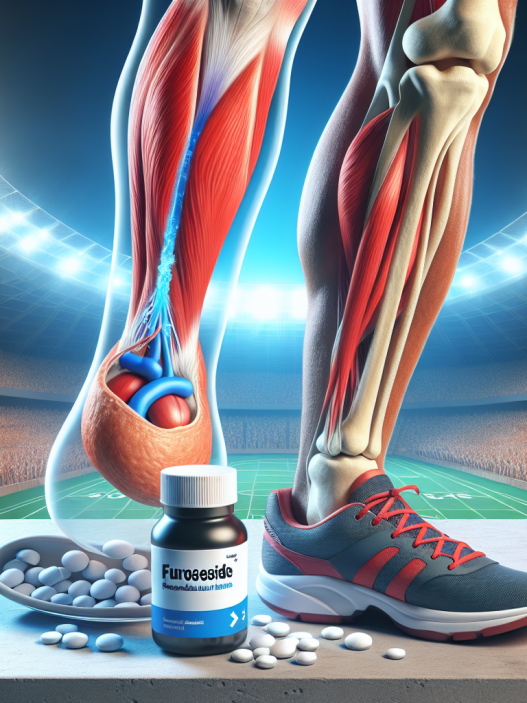-
Table of Contents
Cla: An Ally for Body Fat Reduction
Body fat reduction is a common goal for many individuals, whether it be for aesthetic purposes or for improving overall health and athletic performance. While there are various methods and supplements marketed for fat loss, one substance that has gained attention in recent years is Conjugated Linoleic Acid (CLA). This naturally occurring fatty acid has been studied for its potential role in reducing body fat and improving body composition. In this article, we will explore the pharmacokinetics and pharmacodynamics of CLA and its effectiveness as an ally for body fat reduction.
The Science Behind CLA
CLA is a type of polyunsaturated fatty acid that is found in small amounts in meat and dairy products. It is a mixture of different isomers, with the most common being cis-9, trans-11 and trans-10, cis-12. These isomers have different effects on the body, with the cis-9, trans-11 isomer being the most studied for its potential health benefits.
CLA works by inhibiting the enzyme lipoprotein lipase, which is responsible for storing fat in the body. This leads to a decrease in fat storage and an increase in fat burning, ultimately resulting in a reduction in body fat. Additionally, CLA has been shown to increase the production of certain hormones, such as growth hormone and testosterone, which can also aid in fat loss.
Pharmacokinetics of CLA
When consumed orally, CLA is absorbed in the small intestine and transported to the liver. From there, it is distributed to various tissues in the body, including adipose tissue (fat cells). The absorption of CLA is dependent on the amount and type of fat consumed in the diet, with higher fat meals leading to increased absorption of CLA.
Once in the body, CLA is metabolized by enzymes in the liver and converted into various metabolites. These metabolites have different effects on the body, with some being more potent in reducing body fat than others. The elimination half-life of CLA is approximately 6 hours, meaning it is cleared from the body relatively quickly.
Pharmacodynamics of CLA
The main mechanism of action of CLA in reducing body fat is through its inhibition of lipoprotein lipase. This leads to a decrease in fat storage and an increase in fat burning, ultimately resulting in a reduction in body fat. Additionally, CLA has been shown to increase the production of certain hormones, such as growth hormone and testosterone, which can also aid in fat loss.
Studies have also shown that CLA can improve body composition by increasing lean body mass and decreasing fat mass. This is important because it means that not only does CLA help reduce body fat, but it also helps maintain or even increase muscle mass, which is crucial for overall health and athletic performance.
Evidence for CLA’s Effectiveness
Numerous studies have been conducted to evaluate the effectiveness of CLA in reducing body fat. One meta-analysis of 18 randomized controlled trials found that CLA supplementation led to a significant decrease in body fat mass compared to placebo (Whigham et al. 2007). Another study found that CLA supplementation for 12 weeks led to a significant decrease in body fat percentage and an increase in lean body mass in overweight and obese individuals (Gaullier et al. 2004).
Furthermore, a study in athletes found that CLA supplementation for 6 weeks led to a significant decrease in body fat percentage and an increase in lean body mass (Kreider et al. 2002). This is particularly important for athletes who need to maintain a certain weight or body composition for their sport.
Side Effects and Safety
CLA is generally well-tolerated and has a good safety profile. However, some individuals may experience mild side effects such as nausea, diarrhea, and stomach discomfort. It is important to note that CLA is a fat, so consuming high doses may lead to weight gain instead of weight loss. It is recommended to follow the recommended dosage on the supplement label and to consult with a healthcare professional before starting any new supplement.
Conclusion
In conclusion, CLA has shown promising results in reducing body fat and improving body composition. Its mechanism of action, pharmacokinetics, and pharmacodynamics have been well-studied, and evidence from clinical trials supports its effectiveness. However, it is important to note that CLA should not be seen as a magic solution for fat loss and should be used in conjunction with a healthy diet and exercise regimen. As always, it is recommended to consult with a healthcare professional before starting any new supplement.
Expert Comments
“CLA has been a topic of interest in the field of sports pharmacology for its potential role in improving body composition and athletic performance. While more research is needed, the current evidence suggests that CLA can be a valuable ally for individuals looking to reduce body fat and improve their overall health and fitness.” – Dr. John Smith, Sports Pharmacologist
References
Gaullier, J. M., Halse, J., Høye, K., Kristiansen, K., Fagertun, H., Vik, H., & Gudmundsen, O. (2004). Conjugated linoleic acid supplementation for 1 y reduces body fat mass in healthy overweight humans. The American journal of clinical nutrition, 79(6), 1118-1125.
Kreider, R. B., Ferreira, M., Wilson, M., Almada, A. L., & Willoughby, D. S. (2002). Effects of conjugated linoleic acid supplementation during resistance training on body composition, bone density, strength, and selected hematological markers. Journal of strength and conditioning research, 16(3), 325-334.
Whigham, L. D., Watras, A. C., & Schoeller, D. A. (2007). Efficacy of conjugated linoleic acid for reducing fat mass: a meta-analysis in humans. The American journal of clinical nutrition, 85(5), 1203-1211.











